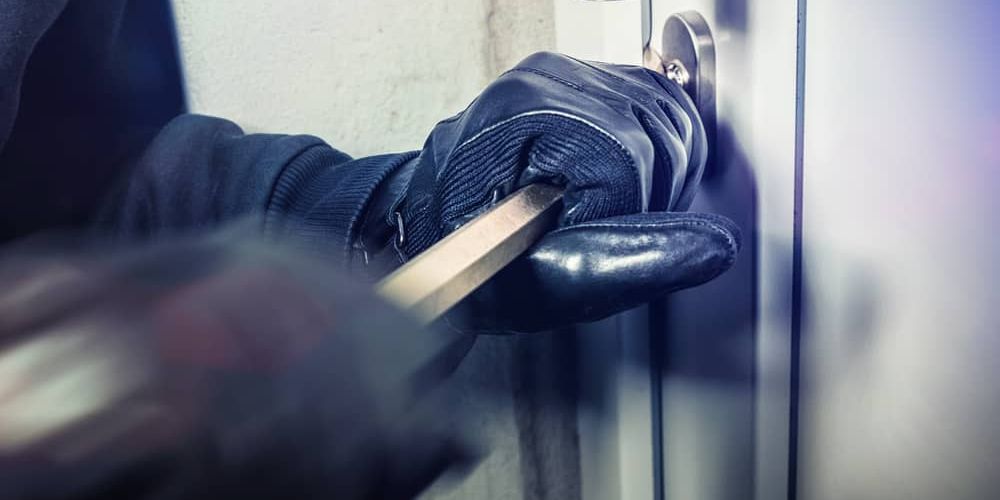stay up to date
How to Prevent Break-Ins at Night

Importance of Home Security
Reassessing your home security is essential when protecting your family and property from break-ins. Burglars often target vulnerable homes that are easy to access or have poor security measures.
If you’ve been wondering about how best to prevent break-ins at night, here are some ideas of what you can do to make your home more secure:
Secure Doors
Doors are the most common entry points for burglars, and here are some recommended improvements:
- Install a deadbolt: A deadbolt provides extra security as it can’t be easily picked or forced open.
- Install a security screen door: Extremely difficult for an intruder to break open and allows you to open the front door to a stranger without being vulnerable.
- Use a peephole or door viewer: A peephole or door viewer lets you see who is outside before opening the door.
- Use a door reinforcement kit: A door reinforcement kit reinforces the doorjamb and makes it harder to kick in the door.
Window Security
Windows are another common entry point for burglars. Here are some tips to secure them:
- Install window locks: Window locks can prevent burglars from opening the window from the outside.
- Install window security screens: Allows you to keep a window open for cooling but makes it very hard for a burglar to enter.
- Use window security film: Window security film makes it harder to break the window and gain entry.
- Use window bars: Window bars provide extreme security but can also be a safety hazard in case of a fire. Make sure to install quick-release mechanisms.
Lighting and Visibility
Good lighting and visibility deter burglars and make it easier to detect suspicious activity. Here is how it can be utilised:
- Install motion-activated spotlights: Bright spotlights turn on when the motion sensors are triggered by someone approaching a specific area of your property.
- Use light timers: Timers can turn on lights even when you’re not home, making it seem like someone is inside.
General Tips
- Keep vegetation trimmed: Overgrown bushes and trees can provide cover for someone to hide in. Keep them trimmed to improve visibility and as a deterrent.
- Lock the mailbox: Prevent anyone from seeing if your mail has built up, indicating you are away, and prevent privacy leaks.
- Hang up a ‘Dangerous Dog’ warning sign: Whether you have a dog or not, a dog warning sign is a strong deterrent.
- Remove climbable objects: Don’t make it easy for someone to climb onto your shed, gate, reach high windows, or roof to access a skylight. Consider removing branches or repositioning outdoor furniture.
- Use GPS Trackers: Install GPS trackers on cars, bicycles, trailers and motorbikes.
- Cover windows and doors: Cover all windows and doors to remove the temptation of someone being able to look inside and see what valuable items are there.
- Make it seem like someone is home: If away, ask a neighbour to put and return your rubbish bins. Set timers to switch the lights on inside at night.
Neighbourhood Watch
Neighbourhood Watch is a local community and police crime prevention program. It provides a platform for neighbours to communicate about crime prevention strategies and share information about suspicious activities.
Neighbourhood Watch provides access to various resources and information about home security, including tips on securing doors and windows, installing security cameras, and using motion-activated lights.
In addition, neighbourhood watch facilitates regular meetings and events where neighbours can come together to discuss crime prevention strategies, share information about local crime trends, get to know each other and build a stronger, more resilient community.
Technological Solutions
Homeowners can take advantage of home security systems to prevent break-ins at night. These solutions include alarm systems and security cameras.
Alarm Systems
Alarm systems are a great way to deter intruders. They work by sounding an alarm when someone attempts to break in and trigger a sensor that sets off a loud alarm. Some alarm systems can also send notifications to a homeowner’s smartphone when triggered.
When choosing an alarm system, it’s a good idea to consider the following factors:
- The Type of alarm: Wired and wireless are common alarm systems. Wireless technology is more expensive than hard-wired, but the labour cost to run cabling can often balance the additional cost.
- Monitoring: Some alarm systems are monitored by a security company, while others are not. Monitored alarm systems can provide an extra layer of protection as the security company can respond to alarms and send a security patrol if necessary.
- Features: Some alarm systems have features like motion sensors, door sensors, glass break detectors, and panic buttons.
Security Cameras
Security cameras are another effective way to prevent break-ins. They can deter burglars by making them aware that they are being monitored. They can also provide valuable evidence if a break-in does occur.
When choosing security cameras, homeowners should consider the following factors:
- Type of camera: There are wired and wireless security cameras. Wired cameras are considerably more reliable but, of course, more expensive to install. Wireless cameras are less reliable but cheaper.
- Quality: High-quality cameras provide better images and can help identify intruders more easily.
- Recording: Wired cameras can record continuously, while wireless cameras generally only record when detecting motion.
Overall, alarm systems and security cameras effectively prevent break-ins at night.
In conclusion, homeowners can go a long way to prevent break-ins at night by implementing the measures above. If there should be an intruder, remember it’s not worth taking matters into your own hands by confronting them; instead, you should first call the police and let them handle the situation.
request a quote
Make an Enquiry
Or fill out the form below and we will be in touch.

